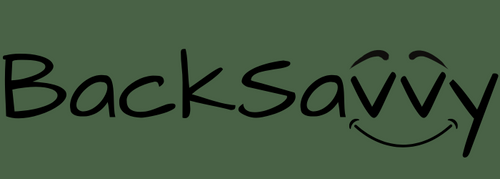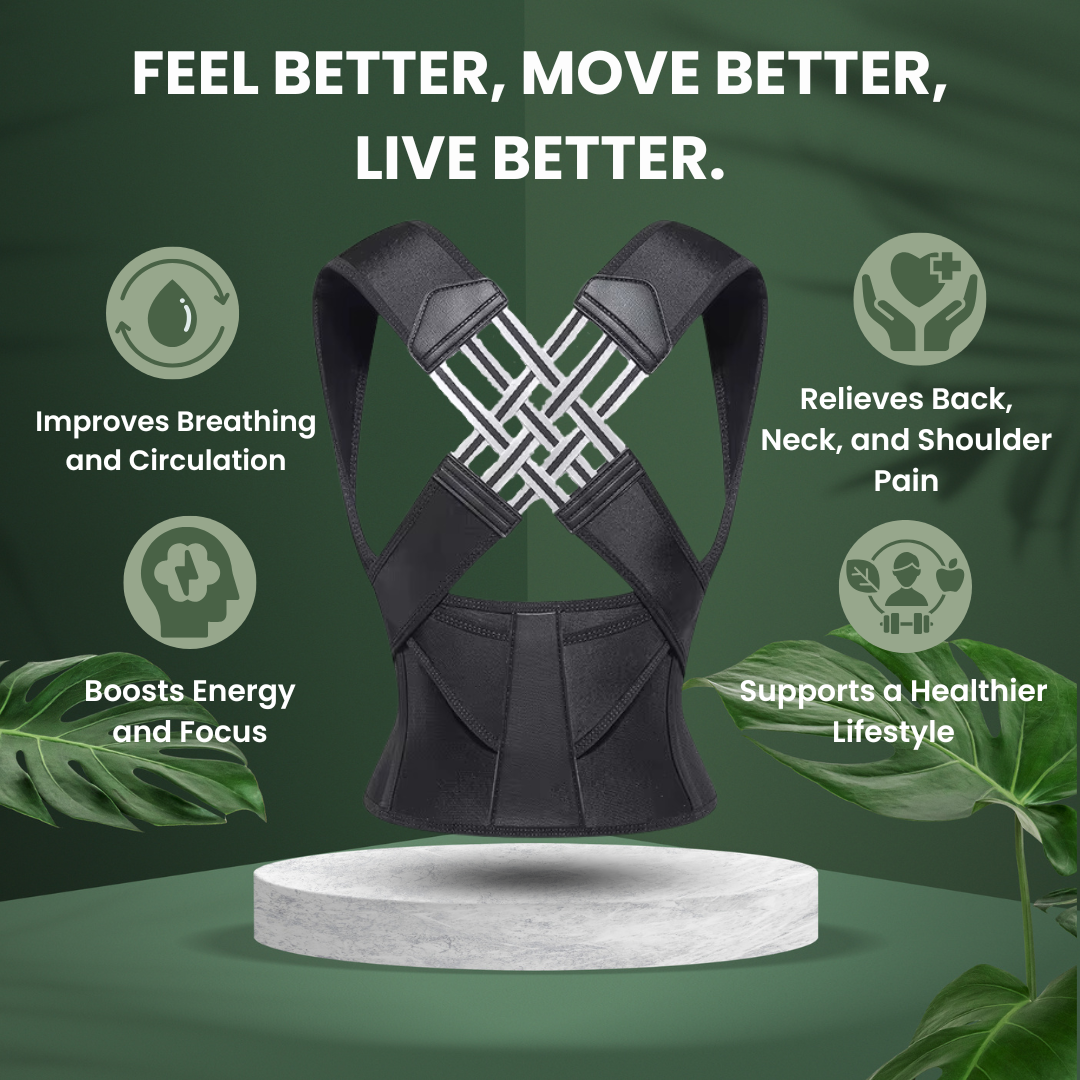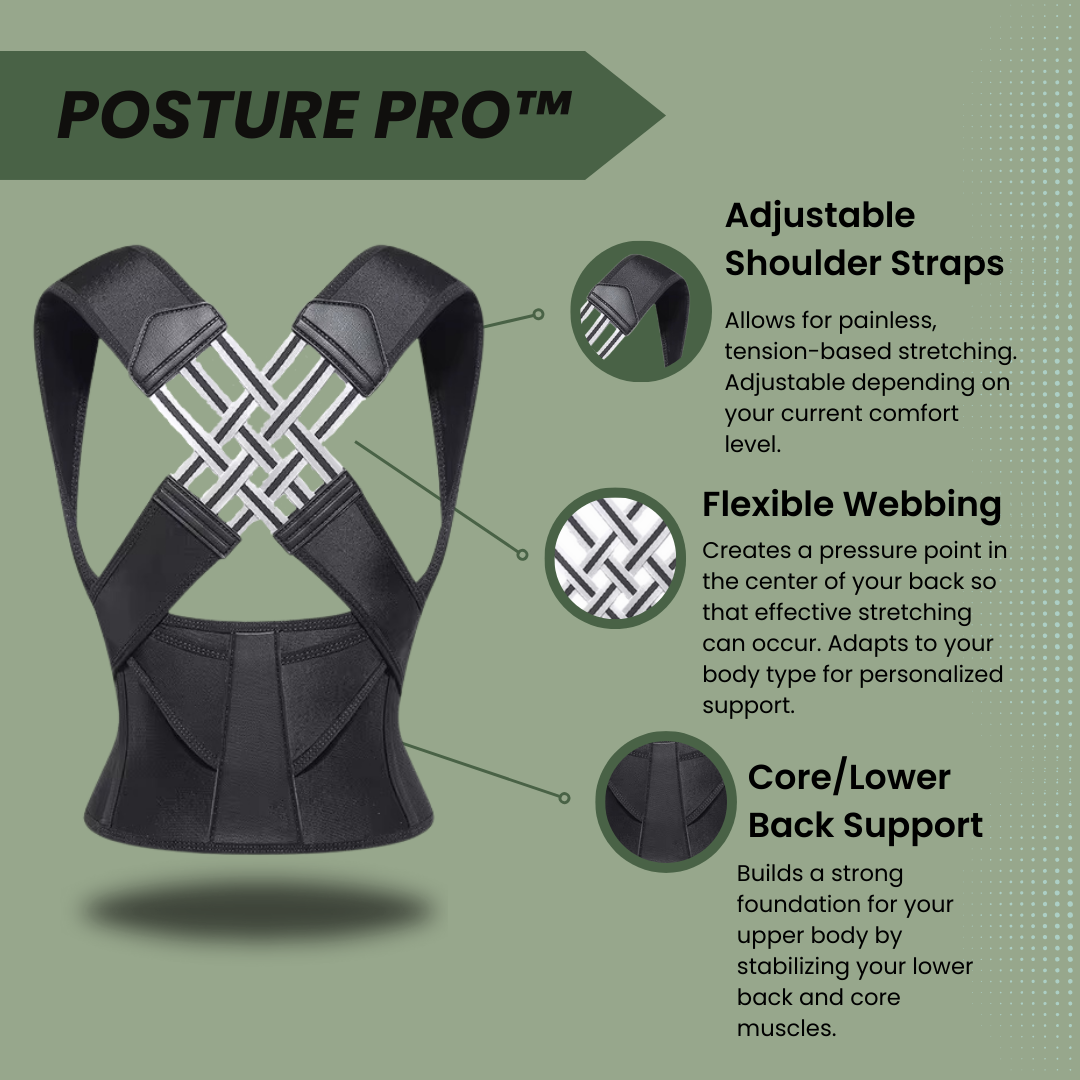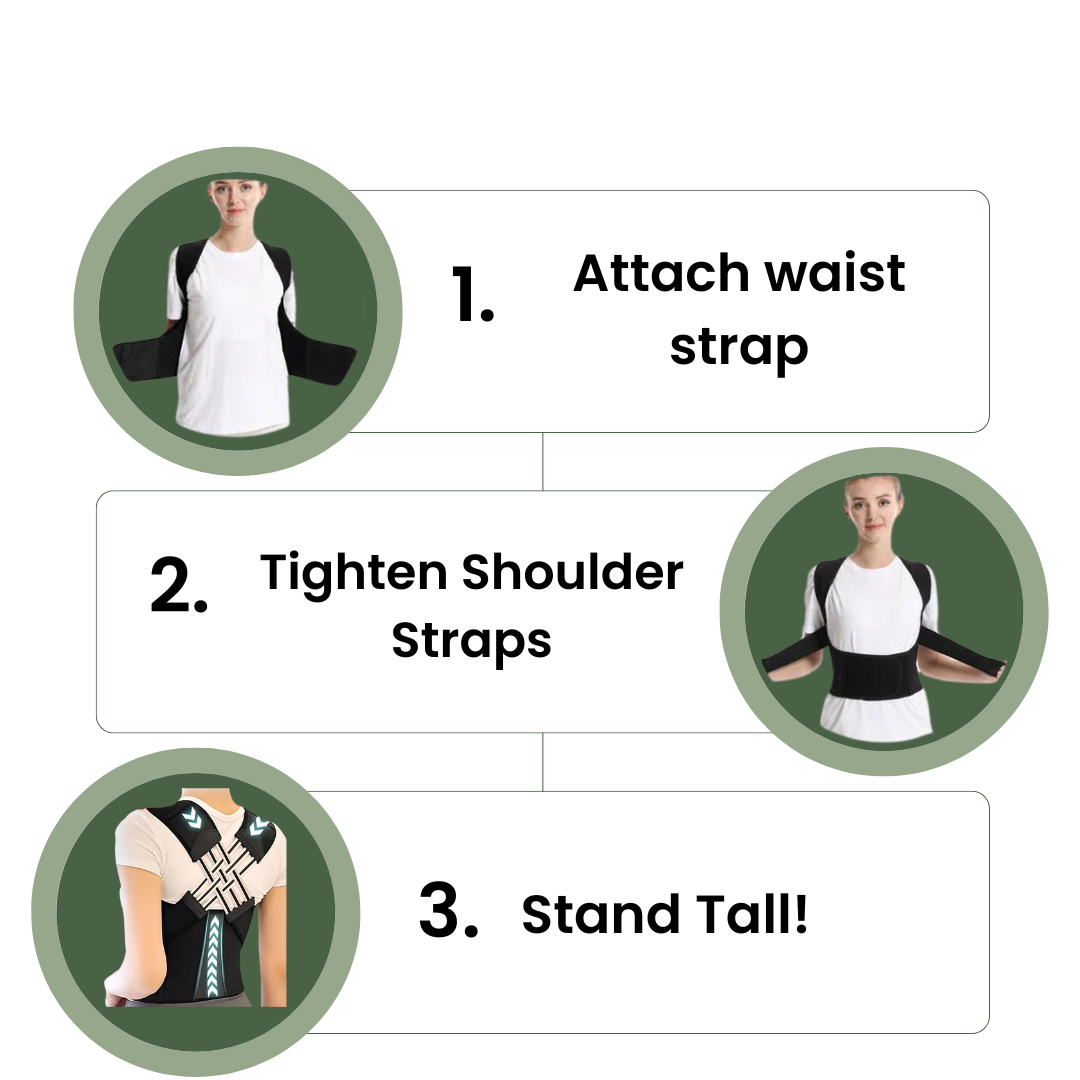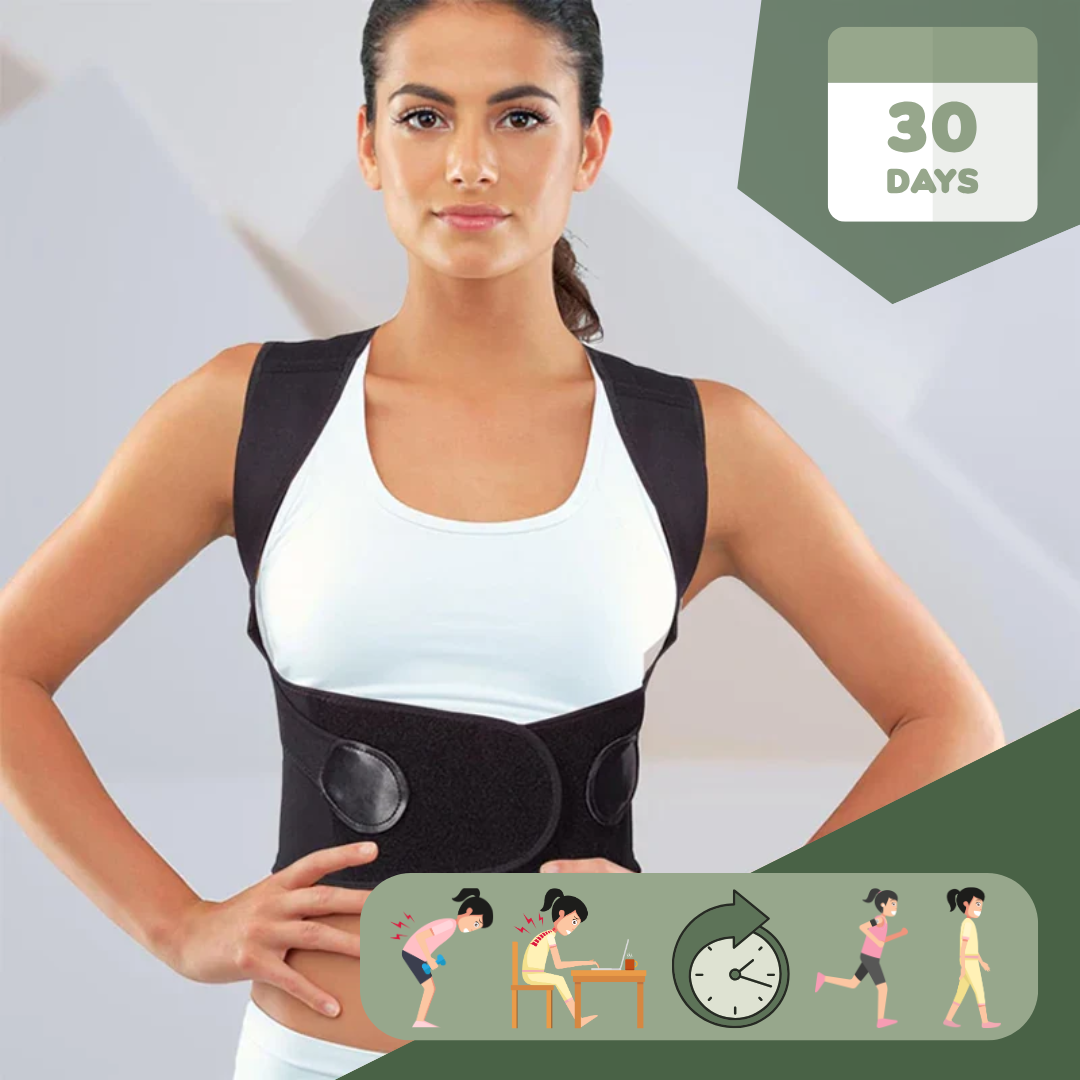Sitting all day can make your body feel stiff. Sitting too much is bad for your health. This article will show you the best desk exercises for posture to help you feel better. Let's get started!
Key Takeaways
- Desk exercises like chin tucks and scapular squeezes reduce pain and improve posture for people who sit all day.
- Stretching at your desk boosts flexibility and lowers the risk of injury, making you more productive.
- stretches ease stress on both body and mind.
- Thoracic extension stretches are proven to help with back strength and flexibility. They should be done five times daily.
- Regular breaks to move around lessen discomfort from sitting too long and keep muscles active.
Benefits of Desk Exercises for Posture

Desk exercises for posture bring many health perks. They cut down pain and boost your wellbeing.
This is key for those with desk jobs facing risks like low back pain from sitting too long.
Doing these stretches often can lower pain by up to 72%. Also, taking short breaks to move around increases how much you get done and lessens discomfort. Stretching helps make your muscles more flexible, which improves how you hold yourself.
This means less strain on your body and better health overall.
Regular stretching at your desk can transform your workday, reducing injury risk and boosting productivity.
Simple Desk Exercises to Improve Posture

Enhance your posture with these straightforward desk exercises. Begin by softly bringing your chin towards your chest, then gently draw your shoulder blades together behind you. Afterward, consider elongating your neck and upper back while seated at your desk. Lastly, reach and stretch to enhance the flexibility of your thoracic spine for improved posture.
Chin Tucks
Chin tucks are excellent for battling neck discomfort and enhancing your seated posture, particularly if your job requires you to be seated all day. To perform them correctly, sit upright with your feet firmly on the floor.
Then, elegantly move your chin toward your chest as if affirming or nodding. This action aids in the stretching and fortifying of your neck muscles. Repeat this move 10 times each hour, being sure to hold it for about 5 seconds each time.
You can increase the difficulty of chin tucks by using your hand. Apply a slight pressure against your chin as you retract it. This action introduces a bit of opposition, prompting the neck muscles to exert more effort.
It's akin to providing a mini workout for those body parts that become inactive due to prolonged sitting. This exercise is crucial for anyone aiming to alleviate shoulder discomfort and correct hunched shoulders without needing to leave their workspace.
Scapular Squeezes
Scapular squeezes are good for your back and shoulders. They make your shoulder blades come together. This move fights against the "tech neck" many get from bending over their desks.
Sit up straight with your feet flat on the ground. Your elbows should bend at 90 degrees as you pull your shoulder blades toward each other. Keep this pose for five seconds.
Do this exercise 10 times in a row, about four to six times a day. It targets important muscles like the rhomboids and trapezius in your upper back. These muscles support good posture by keeping your shoulders from rolling forward.
Making scapular squeezes part of your daily routine can help lower neck pain and shoulder pain linked to sitting too much at a desk job.
Seated Neck Stretch
Sit up straight in your chair. Slowly tilt your head to one side until you feel a gentle stretch along the opposite side of your neck. Hold for 15-30 seconds, then switch sides and repeat the stretch.
Perform this stretch multiple times throughout the day to relieve tension in your neck muscles caused by prolonged sitting at a desk.
Thoracic Extension Stretch
While seated, interlace your arms behind your head. Lean back to extend your thoracic spine. Repeat this five times daily to enhance back extensor strength and spinal flexibility. Several studies reported high adherence rates (80% to 97.5%) to exercise programs, including thoracic extension stretches.
A systematic review found that these extensions significantly improved posture in some studies.
By including these simple exercises into your daily routine, you can take a step towards promoting repetitive strain injuries and enhancing workplace wellness.
Conclusion
In conclusion, enhancing posture through desk exercises is essential for combating the adverse effects of prolonged sitting. By integrating straightforward stretches and movements into your daily routine, you can alleviate stiffness and discomfort while preventing long-term musculoskeletal disorders.
Keep in mind to adjust your desk setup for proper ergonomics and take regular breaks to change positions. These practical solutions, along with postural exercises suggested by physical therapists, can significantly improve your overall well-being in a desk-bound work environment.
FAQs
1. What are some desk exercises to improve posture?
Desk exercises can include chin tucks, upper back stretches, and wrist stretches. These can help counteract the effects of a forward head posture caused by prolonged sitting at a desk job.
2. How do these exercises help with neck and shoulder pain?
By strengthening the neck muscles and shoulders blades, these stretching exercises reduce tension and strain which often lead to neck and shoulder pain. Think of it as pulling up an anchor that's been weighing your body down.
3. Can physical therapy help in improving my sitting posture?
Yes! A physical therapist can provide you with specific posture exercises tailored to your needs, such as targeting abdominal muscles or lower back areas where lumbar lordosis may occur due to poor sitting habits.
4. Are there any preventative measures I can take for musculoskeletal disorders related to repetitive motions at work?
Absolutely! Regular breaks from repetitive motion tasks combined with stretching exercises like roll-ups or yoga poses can prevent conditions like Repetitive Strain Injury (RSI). It's akin to giving your car regular tune-ups so it runs smoothly without breaking down.
5. How does standing at my desk impact my posture?
Using a standing desk promotes better alignment of your spine, helping correct rounded shoulders and reducing low back pain associated with prolonged sitting. It's like switching from slouching on a couch all day to walking tall!
6. Does workplace wellness have any role in injury prevention?
Indeed! Workplace wellness programs often include ergonomic assessments that identify potential risks for injuries related to poor postures or repetitive movements in the office environment – think safety checks on a playground before letting kids run wild.
